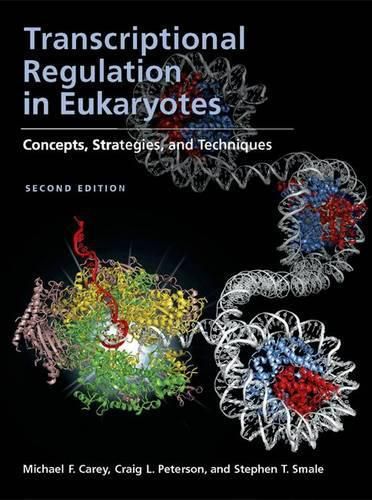Readings Newsletter
Become a Readings Member to make your shopping experience even easier.
Sign in or sign up for free!
You’re not far away from qualifying for FREE standard shipping within Australia
You’ve qualified for FREE standard shipping within Australia
The cart is loading…






Strategies for studying gene regulation mechanisms have changed dramatically over the past several years in light of the emergence of complete genome sequences for many organisms as well as the development of or improvements to technologies such as chromatin immunoprecipitation, RNA interference, microarrays, and proteomics. The first edition of the highly successful Transcriptional Regulation in Eukaryotes, written by Michael Carey and Stephen Smale at UCLA, provided a comprehensive source of strategic, conceptual, and technical information for investigating the complexities of gene regulation at the level of transcription. With the ever-increasing importance of genome data and the appearance of new and better techniques, the second edition of this book has added a third author, Craig Peterson at the University of Massachusetts Medical School. In addition to a new chapter on the in vitro analysis of chromatin templates for DNA-binding studies and transcription, this second edition has been extensively rewritten and updated to discuss new advances in the field and their impact on gene regulation mechanisms. The second edition retains the approach of the first in covering both the conceptual and practical aspects of how to study the regulation of a newly isolated gene and the biochemistry of a new transcription factor. Transcriptional Regulation in Eukaryotes serves as both a powerful textbook and manual for advanced instruction in molecular biology which supplements clearly written text with extensive illustrations puts methods in the context of underlying theory gives expert recommendations on experimental strategies encourages creativity in investigative design explains protocols for essential techniques step by step, with extensive advice on troubleshooting provides the latest methods in use in the field This important and unique book is essential reading for anyone pursuing the analysis of gene expression in model systems or disease states, providing underlying theory and perspective to the newcomer and the latest techniques to the expert.
$9.00 standard shipping within Australia
FREE standard shipping within Australia for orders over $100.00
Express & International shipping calculated at checkout
Strategies for studying gene regulation mechanisms have changed dramatically over the past several years in light of the emergence of complete genome sequences for many organisms as well as the development of or improvements to technologies such as chromatin immunoprecipitation, RNA interference, microarrays, and proteomics. The first edition of the highly successful Transcriptional Regulation in Eukaryotes, written by Michael Carey and Stephen Smale at UCLA, provided a comprehensive source of strategic, conceptual, and technical information for investigating the complexities of gene regulation at the level of transcription. With the ever-increasing importance of genome data and the appearance of new and better techniques, the second edition of this book has added a third author, Craig Peterson at the University of Massachusetts Medical School. In addition to a new chapter on the in vitro analysis of chromatin templates for DNA-binding studies and transcription, this second edition has been extensively rewritten and updated to discuss new advances in the field and their impact on gene regulation mechanisms. The second edition retains the approach of the first in covering both the conceptual and practical aspects of how to study the regulation of a newly isolated gene and the biochemistry of a new transcription factor. Transcriptional Regulation in Eukaryotes serves as both a powerful textbook and manual for advanced instruction in molecular biology which supplements clearly written text with extensive illustrations puts methods in the context of underlying theory gives expert recommendations on experimental strategies encourages creativity in investigative design explains protocols for essential techniques step by step, with extensive advice on troubleshooting provides the latest methods in use in the field This important and unique book is essential reading for anyone pursuing the analysis of gene expression in model systems or disease states, providing underlying theory and perspective to the newcomer and the latest techniques to the expert.